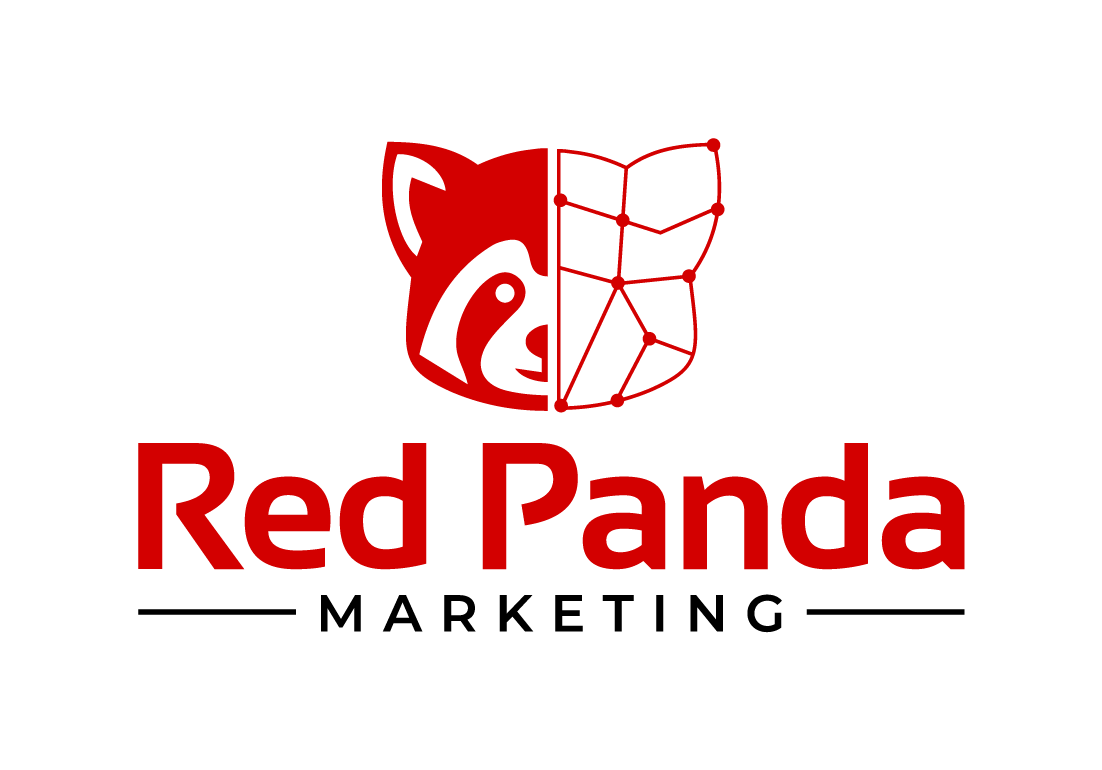The Who, What, Why, & How of Digital Marketing

Knowing the Who, What, Why, & How of Digital Marketing is an essential topic for businesses to consider in today's digital world. As internet access becomes more widespread, the number of people going online daily is steadily rising. Worldwide, the internet's usage number increases annually, with over 5 billion users in 2021. As a result, more than traditional offline marketing strategies, like print and radio advertising or even old-fashioned cold calling, are needed to reach potential customers. Businesses must also utilize digital marketing techniques to meet their audiences where they already spend a good portion of their time – on the internet.
Digital marketing encompasses a variety of solutions and strategies, such as SEO (search engine optimization), content marketing, social media marketing, email campaigns, and more. Each solution has a unique purpose and can be used to reach different goals, such as increasing brand awareness, driving customer engagement, generating sales, and communicating with existing customers. Companies can gain a competitive edge in the digital world by understanding the fundamentals of digital marketing - who, what, why, and how – and creating campaigns to help them achieve their goals.
What is digital marketing?
Digital marketing utilizes channels such as search engines, social media, email, and other websites to reach current and potential customers. It is an effective way for businesses to promote their products and services online to increase sales and brand awareness. Digital marketing also includes communication through text or multimedia messages. This type of marketing has become increasingly popular due to its ability to reach a large audience quickly and cost-effectively.
Digital marketing is used to target specific audiences and demographics. For example, businesses can use search engine optimization (SEO) to increase their visibility in search engine results pages (SERPs). They can also use social media platforms like Facebook, Twitter, and Instagram to reach potential customers. Additionally, businesses can use email marketing campaigns to send promotional messages or newsletters directly to their customers.
Why is digital marketing important?
Digital marketing is an essential strategy for businesses of all sizes. It allows you to reach a larger audience than traditional methods and target prospects who are most likely to buy your product or service. Additionally, it's often more cost-effective than traditional advertising and enables you to measure success daily and pivot as you see fit.
Several significant benefits of digital marketing make it an invaluable asset for businesses. You can focus your efforts on only the prospects most likely to purchase your product or service, which saves time and money. Digital marketing also evens the playing field within your industry, allowing smaller companies to compete with more prominent brands. Furthermore, it's more cost-effective than outbound marketing methods such as television commercials or print ads. All business types, including physical businesses, benefit from having a solid online presence across digital marketing channels to help new customers find them and learn about their products or services before visiting their storefronts.
What are examples of digital marketing solutions?
Businesses can use various digital marketing solutions to help achieve their goals and support their overall go-to-market strategy. These include:
Search Engine Optimization (SEO)
Through SEO, you can increase website (organic or free) traffic by optimizing your website to be higher on search engine results pages. The channels that benefit from SEO include websites, blogs, and infographics. There are several ways to approach SEO to generate qualified traffic to your website, including On-page SEO, Off-page SEO, and technical SEO. On-page SEO focuses on the content that exists "on the page" when looking at a website. Whereas Off-page SEO is the activity that takes place "off the page" when looking to optimize your site. Technical SEO involves:
- Optimizing your webpages behind the scenes, such as compressing images.
- Structuring data.
- Adjusting CSS code to primarily increase the loading speed of your website significantly impacts Google rankings.
Content Marketing
Content marketing consists of creating and promoting content to increase brand visibility, drive traffic, generate leads, and convert customers. Content marketing can take many forms, including blog posts, websites, social media messages, emails, videos, podcasts, and more. Establishing a content marketing plan helps businesses to reach prospective clients on an ongoing basis and form connections with them. Producing content that interests and educates your target audience can demonstrate your expertise in the industry and boost organic search visitors to your website. Developing helpful content related to your business or industry can create more opportunities for new leads to convert into customers. Crafting a well-thought-out content marketing plan can allow companies to reach more customers, increase online visibility and drive more revenue.
Pay-per-click (PPC)
Pay Per Click (PPC) is an online advertising option that can help bring more visitors to your website. The process involves paying a publisher whenever someone clicks on the advertisement. Google Ads is a popular PPC platform that lets you pay for prime positioning on Google's search engine results pages (SERPs). Using paid advertising can give your business more visibility and increase website traffic.
Apart from Google Ads, other channels utilize PPC, including Facebook, Twitter, LinkedIn, and Instagram Ads campaigns. On Facebook, for example, you can use paid advertising to reach people who best match your target market by customizing videos, images, or slideshows for the news feed. On Facebook, you can pay to customize videos, image posts, or slideshows published in the news feeds of people who match your target audience. Through Twitter Ads, you can advertise to a targeted audience to drive website traffic, get more followers, boost tweet engagement, or even encourage app downloads. With Twitter Ads campaigns, you can pay to place a series of posts or profile badges in a specific audience's news feeds to increase website traffic, gain more followers, increase tweet engagement, or even app downloads. Utilizing PPC is an excellent method for targeting potential customers and building recognition for your brand.
Affiliate Marketing
Earning money through affiliate marketing is a great way to use your website or blog. Affiliate marketing, a form of performance-based advertising, involves promoting products or services belonging to other people on your website and receiving a commission for every sale you make. Generating income online without having to produce your products can be accomplished through performance-based advertising.
With affiliate marketing, you have several options, including SEO, PPC ads, and influencer campaigns, a form of digital advertising that utilizes content creators to endorse products or services by sharing them on their social media accounts. Partnering with influencers can elevate your digital campaign and increase its reach to potential customers.
Social Media Marketing
Leveraging social media networks is an effective way to increase exposure for your brand and content. It can help your business improve your brand's recognition, establish you as a trusted source on related topics, bring in more website visitors, and create leads for your business. Managing a consistent content cadence on all social media platforms can be time-consuming and costly. Finding a solution to help you manage your social outreach centrally and allows you to schedule out posts into the future will be a huge time saver.
Commonly used social media channels for marketing include Facebook, Twitter, Instagram, LinkedIn, YouTube, Pinterest, Snapchat, and TikTok. Each platform has distinct features to target potential customers. For instance, you can put together ads aimed at particular audiences based on their preferences or demographics on Facebook. At the same time, with Twitter, you can use hashtags to get involved in discussions about your service or product. Utilizing appropriate platforms and strategies for each channel will enable you to get the most significant effect from your campaigns and realize improved outcomes.
Email Marketing
Businesses can use email marketing to reach their target audiences effectively. With it, businesses can effectively and affordably reach out to their customers and prospects. Through email marketing, companies can promote content, discounts, and events and direct users to their websites.
Standard emails in email marketing campaigns include blog subscription newsletters, follow-up messages to website visitors who downloaded something, welcome emails to customers, and many more. Sending emails to customers is a great way to maintain relationships and give them valuable information about your business. Furthermore, using email to promote discounts and promotions can boost sales. Email marketing lets companies inform customers about new offerings by sending regular updates.
Where should I start with digital marketing?
These are just some tactics companies deploy to execute their digital marketing strategy. Digital marketing strategies must work together. Each digital marketing solution will deliver only some of the time on a company's goals. Different Digital Marketing types work for specific businesses and audiences, can also be seasonal or work better for some businesses at different times of the year, or to help execute particular campaigns. To deploy the best digital marketing activities for your business, you must start with a strategy. That strategy considers your audience, the message you need to deliver, and what digital channels your audience uses to receive or search for information. You don't need to be everywhere, but you need to be where your customers are. So your digital marketing strategy and the tactics you deploy are unique to you, your customers, and the goals you are trying to achieve. You won't get it right the first time or at least get it precisely all the time. Finding what tactics work best is based on trying new strategies and testing and measuring everything you do until you find the combination of things that work consistently for you. But don't get too comfortable; digital marketing strategies and tactics constantly change. Be flexible, open to new ideas, and pay attention to the data for anything you try. Rely on your customers and audience to inform you of the best strategy and tactics to execute.
CONTACT
571-490-7773
contact@redpandamktg.com

SIGN UP FOR OUR NEWSLETTER
Thank you for subscribing to the Red Panda Marketing Blog. You will start to receive blogs directly to your inbox as we publish and summarize them for you.
Uh oh, there was an error sending your message. Please try again later.
© Copyright
Red Panda Marketing
All Rights Reserved
Privacy Policy
